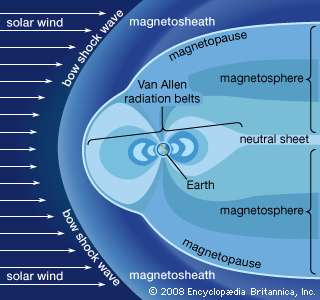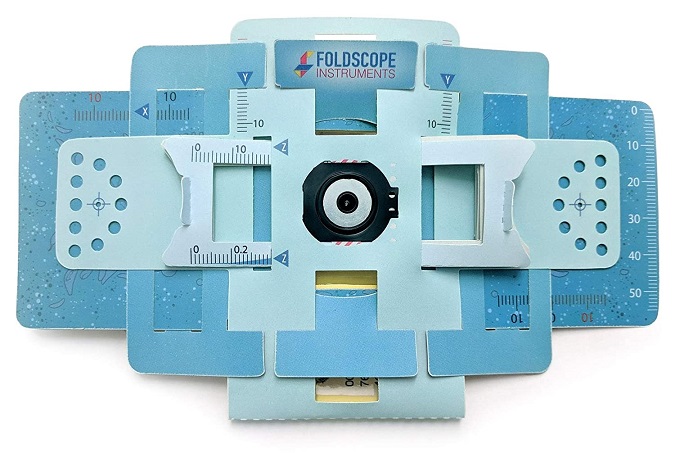Contents
- Decarbonising Transport in India
- Ionospheric irregularities, during major space events
- Foldscope: Alternative to clinical microscope
DECARBONISING TRANSPORT IN INDIA
Focus: GS-III Environment and Ecology, Industry and Infrastructure
Why in news?
NITI Aayog in collaboration with International Transport Forum (ITF) will launch the “Decarbonising Transport in India” project.
Decarbonising Transport in India
- The “Decarbonising Transport in India” project will design a tailor-made transport emissions assessment for India.
- The intention is to develop a pathway towards a low-carbon transport system for India.
- It will provide the government with a detailed understanding of current and future transport activity.
- The Decarbonising transport initiative identifies options for decision-makers to achieve their targets – for instance the Nationally Determined Contributions (NDCs) submitted by countries under the Paris Agreement, as well as targets set by sectors, companies or cities.
DTEE Participants
- The India project is a part of the ITF’s wider initiative of decarbonising transport and is a part of DTEE (Decarbonising Transport in Emerging Economies) series of projects that are aimed at lowering carbon emissions across different regions in the world.
- The current participants in the initiative are India, Argentina, Azerbaijan, and Morocco.
Why is this needed?
- Transport emits more than 20% of the energy-related CO2 that feeds global warming.
- Transport emissions have grown faster than those of any other sector over the past 50 years.
- And because transport relies on oil for more than 90% of its energy, it is particularly hard to decarbonise.
International Transport Forum (ITF)
- The International Transport Forum (ITF) is an inter-governmental organisation within the OECD (Organisation for Economic Co-operation and Development) system.
- It is the only global body with a mandate for all modes of transport.
- It acts as a think tank for transport policy issues and organises the annual global summit of transport ministers.
- The organization brings together 60 member countries.
IONOSPHERIC IRREGULARITIES, DURING MAJOR SPACE EVENTS
Focus: GS-III Science and Technology
Why in news?
Scientists have found that the occurrence of equatorial spread F (ESF) irregularities and GPS scintillations are significantly affected by the geomagnetic storms depending upon the time of the onset of the geomagnetic storm.
Details
- The Earth’s magnetic field lines are nearly horizontal over magnetic equator due to which equatorial ionosphere is a bed for a variety of plasma instabilities to cause plasma disturbances and plasma irregularities.
- These plasma irregularities pose severe problems to the communication and navigation systems and interfere with surveillance operations as well as disruption in detection and tracking of aircraft, missiles, and satellites.
- The Equatorial Spread-F (ESF) caused due to the F region plasma irregularities is a complex phenomenon encompassing a wide range of scale sizes of irregularities in electron and ion densities as well as in electric fields.
- Understanding the thermosphere‐ionosphere-magnetosphere interactions that control the electrodynamics behind dynamical evolution of ionospheric irregularities under disturbed periods like geomagnetic storms is most important in developing and maintaining communication and navigation systems.

What Are Geomagnetic Storms?
- Geomagnetic storms are brief disturbances in Earth’s magnetic field and atmosphere (aka the magnetosphere) caused by bursts of radiation and charged particles emitted from the Sun.
- When this solar matter collides with our planet at high speeds, the surrounding magnetic field deflects it towards the poles. There it interacts with gases deeper in the atmosphere to emit ‘curtains’ of light known as auroras.
- Meanwhile, the fast-moving charges create an intense magnetic field of their own, inducing another set of electrical currents on the ground far below.
- Under strong solar activity, those currents can be strong enough to overpower whole electrical grids and destroy sensitive electronics.
Coronal mass ejection
- A coronal mass ejection (CME) is a significant release of plasma and accompanying magnetic field from the solar corona.
- They often follow solar flares and are normally present during a solar prominence eruption.
- The plasma is released into the solar wind, and can be observed in coronagraph imagery.
- Coronal mass ejections release large quantities of matter and electromagnetic radiation into space above the Sun’s surface, either near the corona, or farther into the planetary system, or beyond (interplanetary CME).
- The ejected material is a magnetized plasma consisting primarily of electrons and protons.
Earth’s Magnetosphere
- Magnetosphere of the earth protecting from solar radiations
- The shape of the Earth’s magnetosphere is the direct result of being blasted by solar wind.
- The solar wind compresses its sunward side to a distance of only 6 to 10 times the radius of the Earth.
- A supersonic shock wave is created sunward of Earth called the Bow Shock.
- Most of the solar wind particles are heated and slowed at the bow shock and detour around the Earth in the Magneto-sheath.
- The solar wind drags out the night-side magnetosphere to possibly 1000 times Earth’s radius; its exact length is not known.
- This extension of the magnetosphere is known as the Magnetotail.
- The outer boundary of Earth’s confined geomagnetic field is called the Magnetopause.
- The Earth’s magnetosphere is a highly dynamic structure that responds dramatically to solar variations.
FOLDSCOPE: ALTERNATIVE TO CLINICAL MICROSCOPE
Focus: GS-III Science and Technology
Introduction
- Foldscope is an affordable origami-based microscopy device composed of a series of paper clippings.
- Upon assembly, the device can hold a specimen slide for observation, and this specimen can be viewed via a mobile phone camera attached to it.

Study showing the usefulness of Foldscope
- A study identifies that Foldscope is particularly convenient to diagnose urinary tract infection (UTI) and monitor kidney stone.
- Using this tool, one can easily monitor own-kidney stone status at home with a simple glass-slide, a Foldscope and a phone in hand.
- Such monitoring could perhaps avoid kidney stone reaching a painful state or surgery in recurring cases.
- This tool can thus be applied successfully in regions where people are more prone to kidney stones due to environmental factors such as water quality



